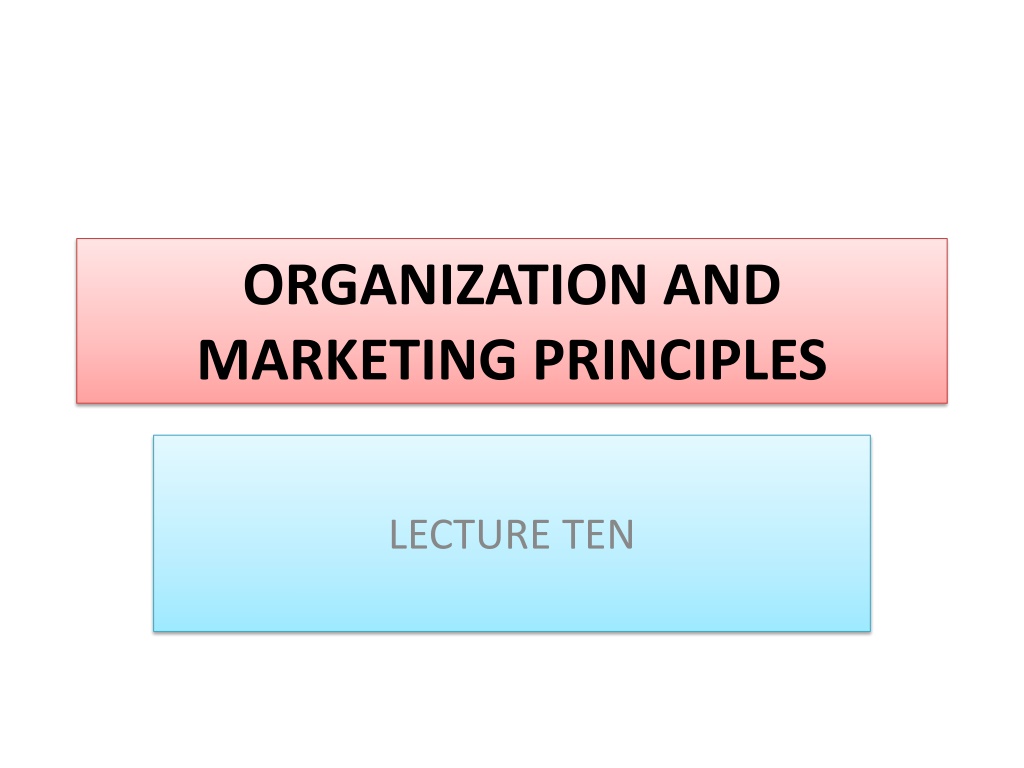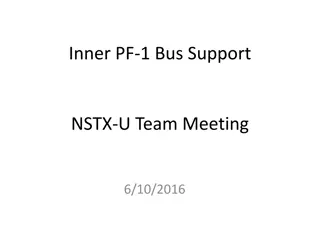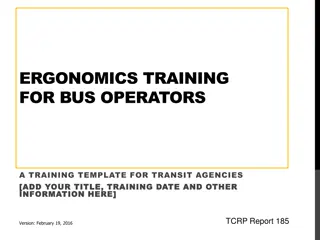
Understanding the Marketing Process and Buyer Behavior
Explore the fundamental concepts of marketing process, buyer decision behavior, buyer decision process, and business buying process. Learn about customer-driven market strategy, product and brand strategy, and product development stages to enhance your understanding of marketing principles. Discover how to meet customer needs, create customer value, and build profitable relationships to drive business success.
Download Presentation

Please find below an Image/Link to download the presentation.
The content on the website is provided AS IS for your information and personal use only. It may not be sold, licensed, or shared on other websites without obtaining consent from the author. Download presentation by click this link. If you encounter any issues during the download, it is possible that the publisher has removed the file from their server.
E N D
Presentation Transcript
ORGANIZATION AND MARKETING PRINCIPLES LECTURE TEN
THE MARKETING PROCESS A Simple Model 1. Understand the marketplace and customer needs and wants 2. Design a customer-driven marketing strategy 3. Construct an integrated marketing program that delivers superior value 4. Build profitable relationships and create customer delight 5. Capture value from customers to create profits and customer equity
BUYING DECISION BEHAVIOR Cultural, Social, Personal Factors 1. Complex BB 2. Dissonance-reducing BB 3. Habitual BB 4. Variety-seeking BB
THE BUYER DECISION PROCESS 1. Need recognition 2. Information search 3. Evaluation of alternatives 4. Purchase decision 5. Post-purchase behavior
BUSINESS BUYING PROCESS 1. Problem recognition 2. General need description 3. Product specification 4. Supplier search 5. Proposal solicitation 6. Supplier selection 7. Order-routine specification 8. Performance review
Customer-driven MARKET STRATEGY 1. Market Segmentation: Dividing a market into smaller groups with distinct needs, characteristics, or behaviors who might require separate products or marketing mixes. 2. Market Targeting: The process of evaluating each market segment's attractiveness and selecting one or more segments to enter. 3. Differentiation: Actually differentiating the firm's market offering to create superior customer value. 4. Positioning: Arranging for a product to occupy a clear, distinctive, and desirable place relative to competing products in the minds of target consumers.
PRODUCT, SERVICE, AND BRAND STRATEGY Individual product decisions involve product attributes, branding, packaging, labeling, and product support services. A product line is a group of products that are related in function, customer-purchase needs, or distribution channels. Brand strategy: In building brands, companies need to make decisions about brand positioning, brand name selection, brand sponsorship, and brand development. A company has four choices when it comes to developing brands. - line extensions, brand extensions, multi-brands, or new brands.
PRODUCT DEVELOPMENT STAGES 1 Idea generation; 2 Idea screening; 3 Concept development and testing 4 Marketing strategy development; 5 Business analysis; 6 Product development 7 Test marketing; 8 Commercialization
PRODUCT LIFE CYCLE 1. Production Development 2. Introduction Stage 3. Growth 4. Maturity 5. Decline
PRICE-ADJUSTMENT STRATEGIES 1. Discount and allowance pricing: Reducing prices to reward customer responses such as paying early or promoting the product 2. Segmented pricing: Adjusting prices to allow for differences in customers, products, or locations 3. Psychological pricing: Adjusting prices for psychological effect 4. Promotional pricing: Temporarily reducing prices to increase short-run sales 5. Geographical pricing: Adjusting prices to account for the geographic location of customers 6. Dynamic pricing: Adjusting prices continually to meet the characteristics and needs of individual customers and situations 7. International pricing: Adjusting prices for international markets
Comparison of Conventional Distribution Channel with Vertical marketing System Conventional marketing Channel Vertical marketing system Producer Producer Wholesaler Wholesaler Retailer Retailer Consumer Consumer
MULTICHANNEL DISTRIBUTION SYSTEM Producer Distributors Retailers Dealers Consumer Segment 1 Consumer Segment 2 Business Segment 1 Business Segment 2
MAJOR TYPES OF RETAIL STORES Specialty Stores Department Stores Supermarkets Convenience Stores Discount Stores Off-Price Retailers Superstore.
MAJOR TYPES OF WHOLESALERS Sub-type Sub-sub-type Type Wholesale merchants Industrial distributors Full-service wholesalers Cash-and-carry wholesalers Truck wholesalers Drop shippers Rack jobbers Producers' cooperatives Mail-order wholesalers Merchant wholesalers Limited-service wholesalers Brokers Manufacturers' agents Selling agents Purchasing agents Commission merchants Brokers and agents Agents Manufacturers' and Retailers' Branches and offices Sales Branches and offices Purchasing officers
MAJOR ADVERTISING DECISIONS Objective setting Communication objectives, Sales objectives Budget decisions Affordable approach, Percent of sales, Competitive parity, Objective and task Message decisions Message strategy Message execution Media decisions* Reach, frequency, impact Major media types Specific media vehicles Media timing Advertising evaluation Communication impact, Sales and profit impact, Return on advertising *Profiles of major media types Television, Newspapers, Direct mail, Magazines, Radio, Outdoor, Internet
DIRECT ONLINE MARKETING Form Description Direct marketing by sending an offer, announcement, reminder, or other item to a person at a particular address Direct-mail marketing Direct marketing through print, video, or electronic catalogs that are mailed to selected customers, made available in stores, or presented online. Using the telephone to sell directly to customers. Catalog marketing Telephone marketing Direct-response Television marketing Direct marketing via television, including direct-response television advertising and home shopping channels. Many companies are placing information and ordering machines in stores, airports, and other locations. Kiosk marketing New digital direct marketing technologies Mobile phone marketing, Podcasts and Vodcasts, Interactive TV Company efforts to market products and services and build customer relationship over the internet. Online marketing Integrated direct marketing Direct-marketing campaigns that use multiple vehicles and multiple stages to improve response rates and profits.
THE END SEE YOU NEXT WEEK






















